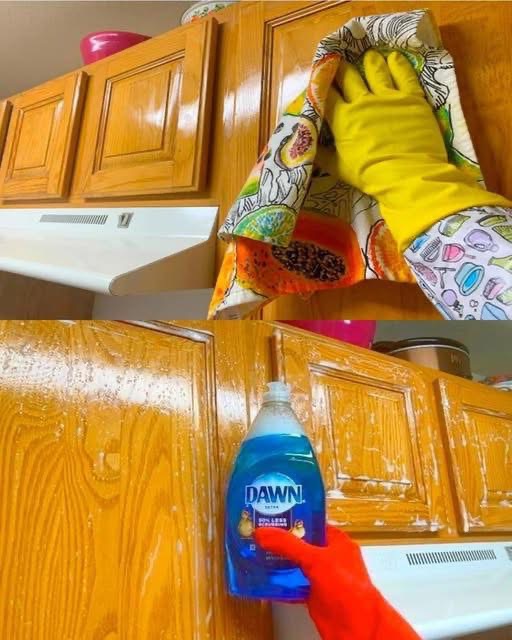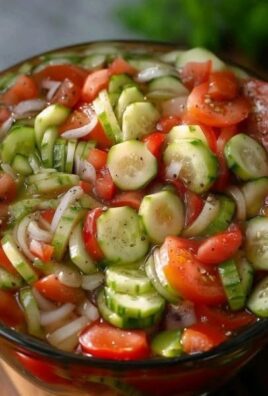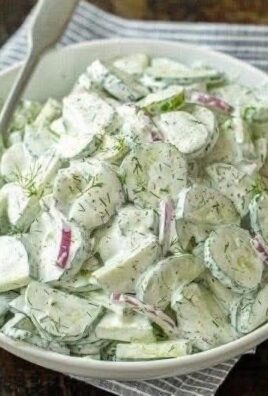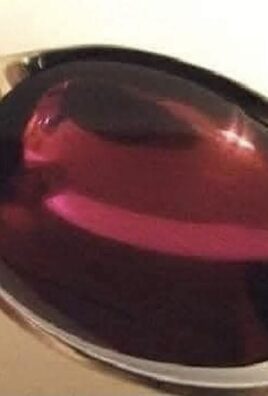
🌟 Introduction
Kitchen cabinets are one of the most used and noticed features in any home. Over time, grease, dust, and cooking residue can build up on their surfaces, leaving them dull, sticky, and unattractive. Thoroughly cleaning them not only restores their shine but also prolongs their lifespan, keeping your kitchen hygienic and welcoming.
🏡 Origin and Cultural Significance
The practice of maintaining kitchen cabinets dates back to when cabinetry first became a staple in homes during the 19th century. In many cultures, a clean and orderly kitchen symbolizes hospitality, care for the family, and pride in the household. Regularly cleaning cabinets is more than a chore—it reflects cultural traditions of cleanliness and respect for the space where food is prepared and shared.
🧴 What You’ll Need (Ingredients & Tools)
- 2 cups warm water
- 2 tablespoons dish soap (mild, grease-cutting)
- 1 cup white vinegar
- 2 tablespoons baking soda
- 2 tablespoons olive oil or mineral oil (for polishing)
- 2 microfiber cloths (one for cleaning, one for drying)
- 1 soft-bristle brush or old toothbrush
- Spray bottle (optional for easier application)
Optional Additions
- A few drops of lemon essential oil for freshness
- Castile soap as a natural alternative to dish soap
- Store-bought wood polish for extra shine
- Magic eraser for stubborn marks
- Gloves to protect sensitive hands
💡 Tips for Success
- Always test your cleaning solution on a hidden spot first to avoid damage.
- Work from the top down to prevent drips on cleaned areas.
- Avoid soaking cabinets—too much moisture can warp wood.
- Use gentle circular motions on stubborn grime.
- Finish with a buffing cloth to restore shine.
📝 Step-by-Step Instructions
1. Prepare the Cleaning Solution
Mix warm water, dish soap, and vinegar in a bowl or spray bottle. For stubborn grease, make a paste with baking soda and water.
2. Wipe Down Surfaces
Dip a microfiber cloth into the solution, wring it out, and wipe cabinet doors, handles, and edges.
3. Scrub Stubborn Spots
Apply the baking soda paste with a toothbrush or soft-bristle brush to greasy or sticky areas.
4. Rinse and Dry
Wipe again with a damp cloth to remove residue, then dry thoroughly with a clean microfiber cloth.
5. Polish
Buff the cabinets with a small amount of olive oil or mineral oil to restore natural shine and protect the wood.
✨ Description
After cleaning, your kitchen cabinets will look refreshed and free of grease, dust, and dullness. The vinegar and soap dissolve grime, baking soda tackles stubborn stains, and oil restores warmth and luster. The result is a kitchen that feels brighter, cleaner, and more inviting.
📊 “Nutritional” Information (Household Perspective)
- Health Benefit: Reduced bacteria and allergens in your kitchen.
- Household Benefit: Longer cabinet lifespan and preserved finish.
- Environmental Benefit: Safe, non-toxic cleaning without harsh chemicals.
✅ Conclusion
Thoroughly cleaning dull and grimy kitchen cabinets is one of the simplest yet most effective ways to revive the heart of your home. With just a few natural ingredients, you can transform tired, sticky surfaces into fresh, gleaming ones.
🔄 Recommendation
Clean your cabinets every 2–3 months for routine maintenance, and give them a deeper polish at least twice a year. Pair cabinet cleaning with regular kitchen upkeep to keep your space both functional and beautiful.
🌿 Embracing Healthful Indulgence
A clean kitchen creates an atmosphere of calm and joy, making cooking and gathering more enjoyable. By using gentle, natural cleaners, you protect your family’s health while indulging in the satisfaction of a sparkling, well-kept home. Clean cabinets are more than a visual delight—they’re a foundation for healthier living and happier cooking.




Leave a Comment